In the Studio: Margaret Curtis
“I became very interested in what was behind a facade, or what was underneath, w...

Angela Hennessy is an Oakland-based artist and a 2021 recipient of the Joan Mitchell Fellowship. We interviewed her about her work and creative practice in August 2022. The following is an edited transcript of that conversation.
I make objects and installations, often whole gallery environments that invite people into an alternate world, an alternate reality. Some of the images and the source material that I'm working with are from black holes and rainbows and planets. I think a lot about one's individual orientation in relationship to larger planetary celestial systems, in relationship to the stars.
I think about all these things as bodies moving through space. One of my concerns is then how we are moving through space, occupying space, taking up space, or trying to find our place in a larger system or larger structure. One of the main materials I've been working with for quite a few years now is synthetic hair, which is really a way of bringing Black bodies into these environments.
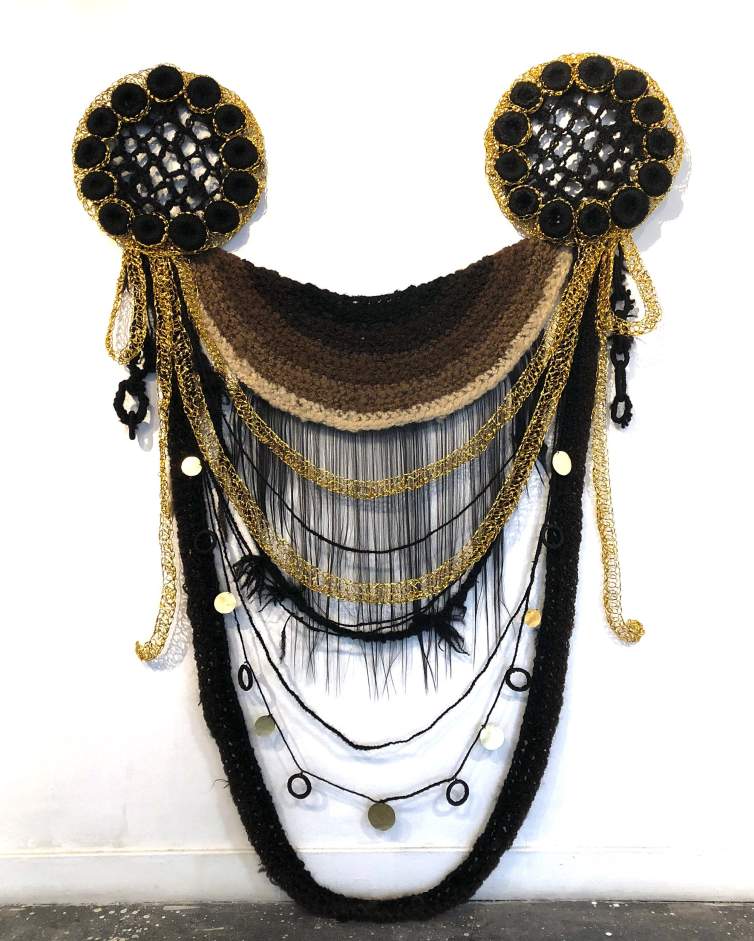
I think it all really started with trying to understand the hair on my head as a child. Hair is one of the main signifiers of racialized identity, next to the color of someone's skin. It’s one of the ways that we attempt to identify people, where they're from, their orientation, their origin. Using hair as a material in the studio, it's like trying to understand in a really embodied way how hair can perform or fail to perform.
Hair is a material that is exchanged between the living and the dead. There are rituals and traditions where hair is offered as a sign of respect or as a gesture of grief when someone has died, and then of course there are lots of traditions that collect hair from someone who has died, from a postmortem body. I'm really interested in how materials can make visible or tactile these relationships between the living and the dead. That's certainly one of my big motivations in the work—to think about how I am in relationship with my dead people, how I'm in relationship with my ancestors. And what materials might be the form or the structure or the language that I'm trying to communicate with.
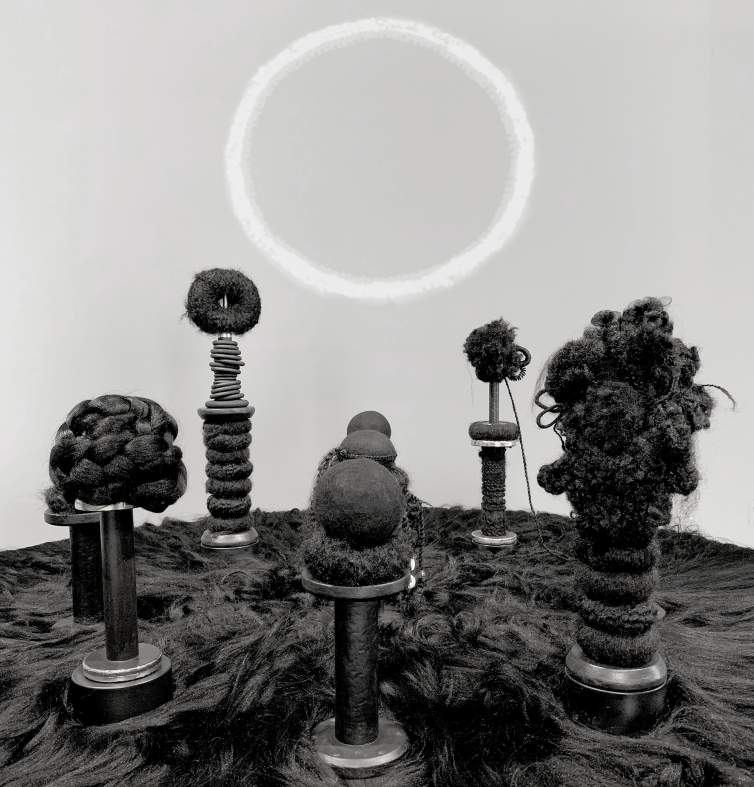
In my work, there is a kind of a call and response between theory and practice—between what happens when I'm reading a book or researching a topic, on an intellectual level, and what happens when I actually get in the studio and I'm face-to-face, body-to-body with the materials that I have surrounded myself with. Theory works best when it’s derived from practice. It's hard to say exactly where it begins, but the materials and the ideas are always in conversation, in dialogue with each other. Sometimes I take all of the books out of my studio to focus on the materials, to really listen. I do find that often the conversation that I'm having with the particular material is literally telling me, “Yes,” “No,” or, "Do this," or, "Don't do that."
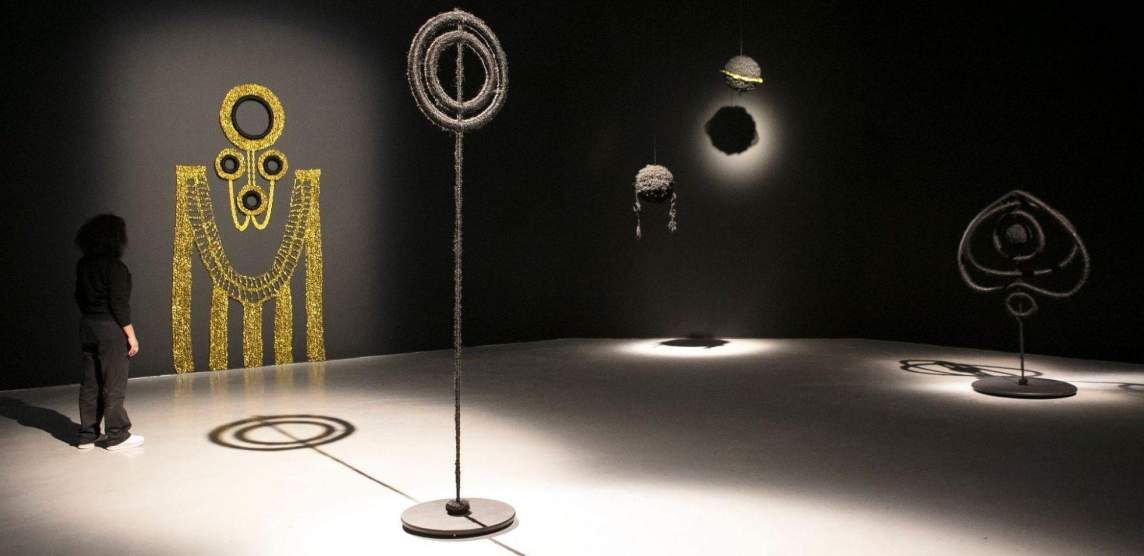
I just had a show at SOMArts, in San Francisco, that was titled As I Live and Breathe, which is a way of giving testimony to witnessing something, identifying what you have seen through the body. That literally this thing is happening as I live and breathe. The living, breathing body becomes a witness.
SOMArts gallery is a huge space, around 3,000 square feet—definitely the biggest space that I've had a solo exhibition in. We painted the whole gallery black and I made these floating, suspended planets that were arranged around the room, floating overhead. They're stitched over with hair in black and brown colors, what I call my black rainbow palette. And then there was a set of sculptures that were spread out across the floor. When you walked in, you really felt like you left whatever earthly realm you had been on and entered into some other kind of universe.
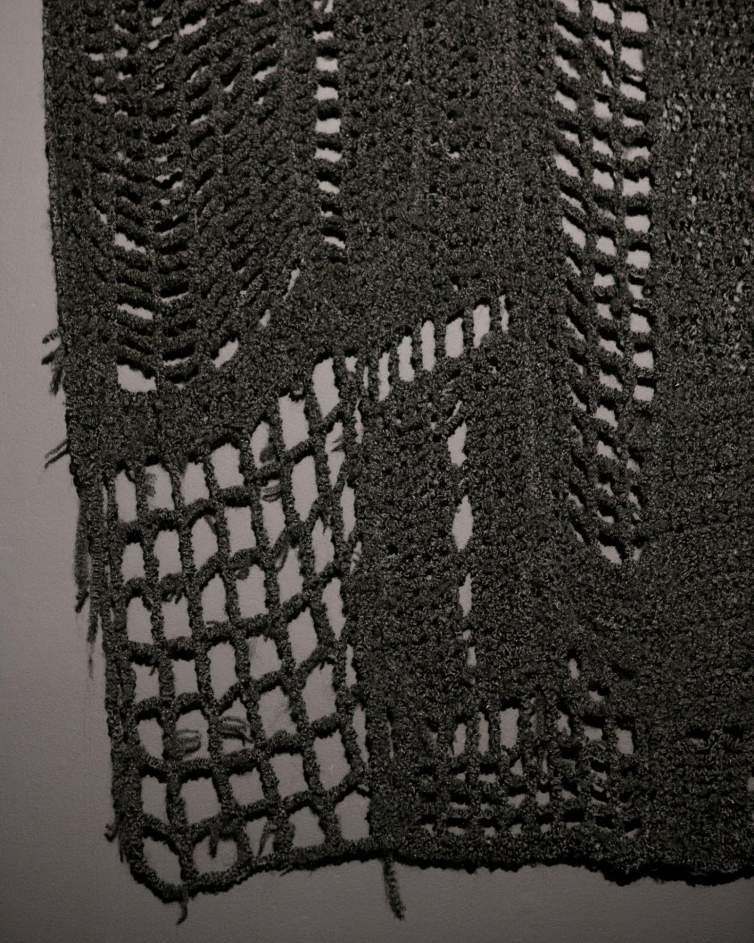
The grounding piece in the show was this giant black square, 12 feet by 12 feet, that was all crocheted hair. The piece is titled And Counting, which is a reference to counting stitches in crochet, but also to counting the dead. Counting and naming are things that I talk about a lot in my work and in my teaching, as two really significant ways that we identify or acknowledge the dead. We're often counting through the abstraction of numbers, or we're engaged in naming the dead, calling the dead, and humanizing them with a name, speaking to them and being in relationship to them.
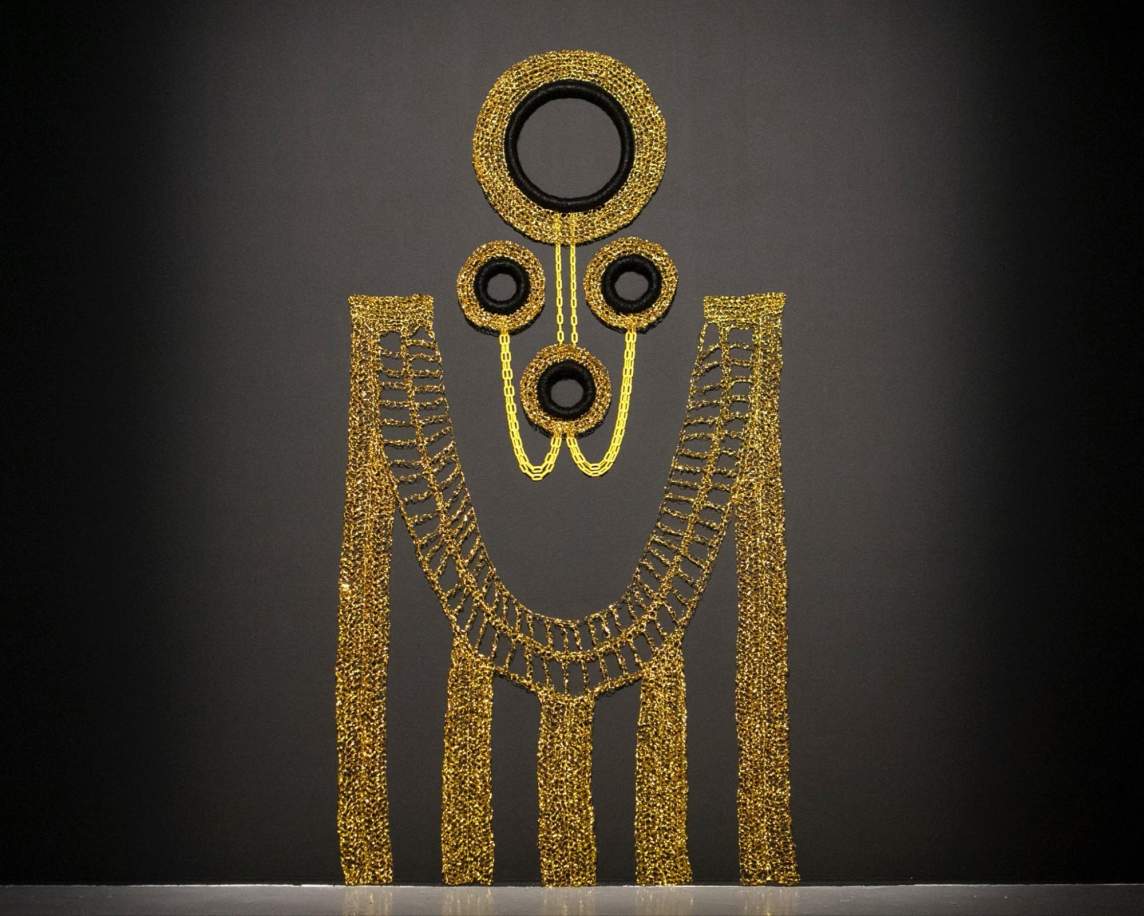
Opposite of And Counting was a wall work, Some Powers That Be, which is one of my favorite pieces in the show. It is an installation of crochet gold wire in this large-scale, abstracted female form, with a big head on top and these gold rays that extend to the floor as forces or energies that come to us through divine systems. With cosmology being at the heart of this show, I was very much thinking about origin and destiny, where we have come from, where we are going, and what happens in the moments in those spaces in between.
I have a new installation of the planets that is up at the Oakland Museum right now, with this giant morning wreath that I re-made for the Hella Feminist exhibition. And I'm working on new wall works for a show at the McEvoy Foundation that opens in about five weeks called Color Code. It’s four Bay Area artists who are working with color in really intentional and specific ways. I have worked with the color black for decades, as a color that indicates grief or mourning, but that is also simultaneously a color used to name and identify African American people. I think about that intersection, where those meanings inform each other, sometimes in positive ways and sometimes as almost predetermined outcomes.
About five years ago I started wanting to step outside of the black-white binary of always putting black objects or black things into white gallery spaces. I began working with a palette of blacks and browns and thinking about identity as a rainbow, as a full spectrum of experience.
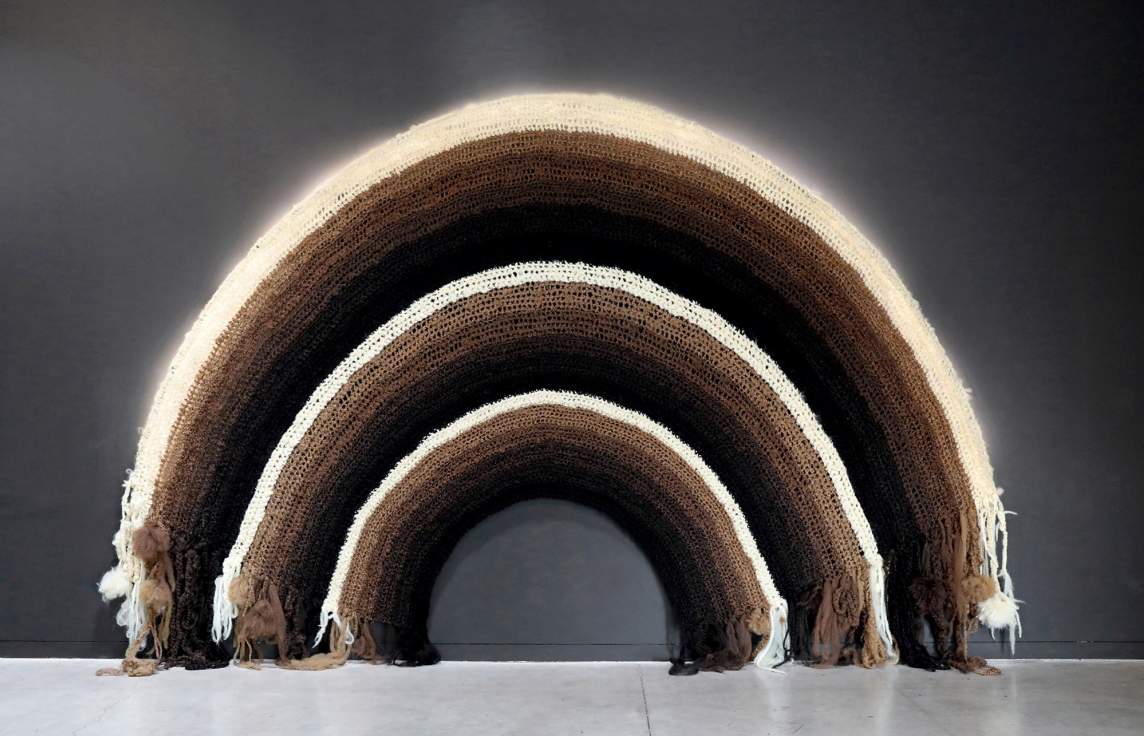
With the McEvoy Foundation show, the new work that I'm doing is really based on those ideas, but I'm working specifically with gold for that show. My background in undergrad was actually in metalsmithing, and for a long time I worked in the jewelry industry. So my relationship to gold comes through initially as a material, because I’ve made jewelry objects out of it, and then as a color.
Gold is also another way to talk about race and identity, and to talk about power and status, seduction, colonial legacy. I just got back from a trip to Ghana last month, and I learned quite a bit about the history of gold within the Akan lineage, as a material at the center of their origin story. The work is going to be some sort of a wall installation of gold and black objects.
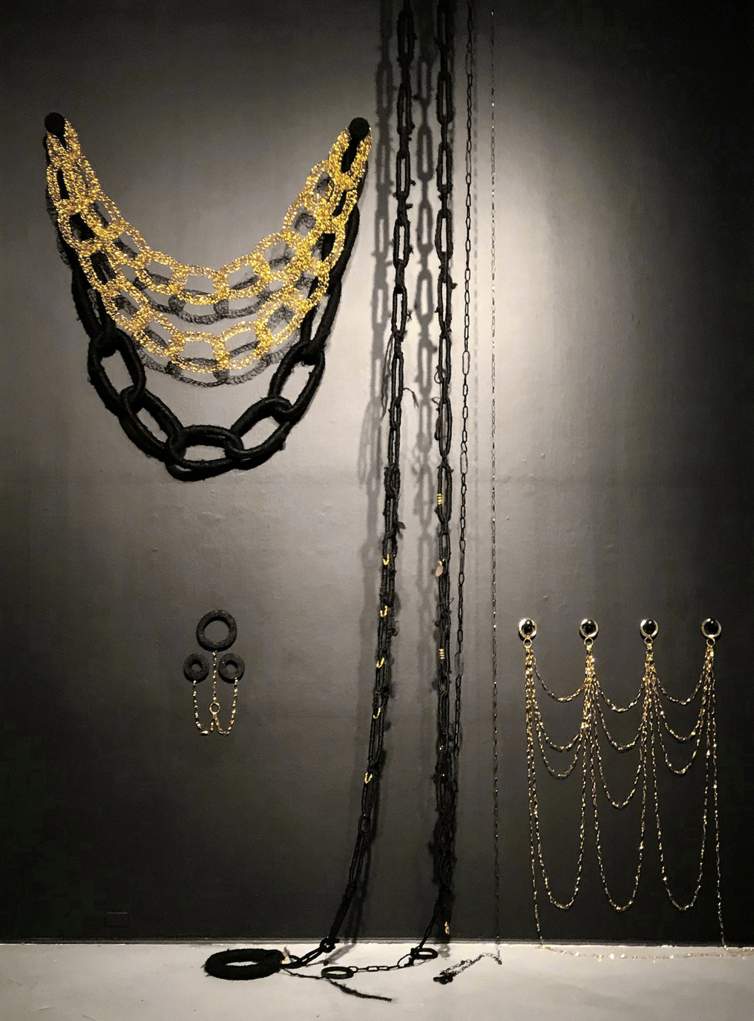
It’s important to me that my work invites questions and speculation, and a certain kind of curiosity about the materials. Often the materials I use will look like one thing but they're actually something else, and there's a kind of slippage or a collapse that happens when people are viewing it. So maybe they thought a piece was stone, and then it turned out that it was Ivory soap that I've been carving. People tell me that there are sometimes these “a-ha” moments when they think, “Oh, it’s this,” and then as they get closer and see and experience the material in a more intimate way, something is revealed to them.
Being at a loss for words is something that I'm really curious about—that there's the attempt to define or to find language for something that is resisting a clear definition. Maybe it's even like a sense of disorientation. The work is so much about orientation that maybe it brings people into a space of disorientation first. And that isn't always a comfortable place where people want to hang out.
That's one of the ways that art becomes so deeply powerful—it provides a space for us to talk about things or to see, notice, observe, acknowledge things that we may want to dismiss or cast away. But we're invited in through materiality, we're invited in through color, through these aesthetic and somatic experiences that then become the language for how we talk about things that maybe we don't really want to talk about. For me, because my areas are death and grief and racialized identities, those aren't always things that people want to talk about. It is often a struggle to find the language to speak about those things.
Interview and editing by Jenny Gill. Learn more about Angela Hennessy’s work here.